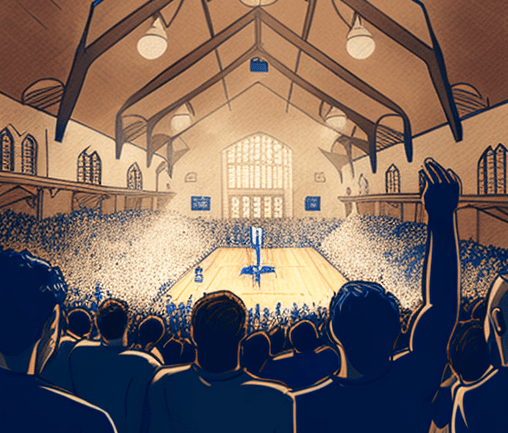College basketball is a thrilling sport that can be enjoyed by anyone who loves watching talented athletes compete at the highest level. One aspect of the game that has a significant impact on the outcome is home court advantage. It is a phenomenon that can drastically influence the outcome of a game, and it is a crucial factor for teams looking to advance in the postseason.

Home court advantage is the term used to describe the advantage that a team has when playing on their home court. This advantage can come from a variety of factors, such as the crowd noise, familiarity with the playing surface, and the absence of travel fatigue. These factors can create a comfortable and familiar environment for the home team, which can give them a boost in performance and motivation.
What Are the Potential Factors Go Into Home Court Advantage?
Crowd noise could be one of the factors contributing to home court advantage. The home crowd can provide a significant source of energy and motivation for the players, as well as disrupting the opposition’s communication. The noise levels in college basketball arenas can reach ear-piercing levels, making it difficult for opposing players to communicate with each other on the court. The home team can feed off the energy of the crowd, and this can help them maintain their intensity and focus throughout the game.
Another factor that may contribute to home court advantage is the familiarity with the playing surface or baskets. The playing surface in college basketball can vary from arena to arena, and this can be a significant advantage for the home team. The home team will be accustomed to the playing surface, and this can give them an advantage in terms of footwork, balance, and shot selection.
Travel fatigue is another significant factor that can impact a team’s performance on the road. College basketball teams play a grueling schedule, with little time for rest. When a team is traveling, they have to deal with the physical and mental fatigue that comes with being on the road, as well as the added stress of adjusting to a new environment. This can affect a team’s performance, and it can make it difficult for them to maintain their energy and focus throughout the game.
Do Any of These Factors Really Matter?
Perhaps not!
In 2012, the book “Scorecasting” was published. This book argued, very convincingly, that the main source of home court advantage was related to referee bias. As a behavioral economist, Tobias Moskowitz systematically ruled out (or at least minimized) the three factors listed above. However, there was significant evidence that referees tended to place a heavy bias on calling fouls against the away teams.
Regardless of what factors cause this phenomenon, there is no doubt that home court advantage is real.
How Much of an Advantage Does the Home Team Have?
Running tests against data that goes back to the beginning of the 2021-2022 season, we found that the current home court advantage across all of college basketball is 3.043 points. This covers almost 7,000 games and is, thus, a pretty reliable metric. Admittedly, when you get down to the individual team level, the data gets much less reliable. However, our analysis finds that Kentucky seems to have the best home court advantage in the country with a 4.683 point benefit.
At a conference level, the top-three conference home court advantages are:
- Mountain West: 3.75 points
- Big Ten: 3.550 points
- Big 12: 3.514 points
While the worst three conference home court advantages are:
- MAAC: 2.356 points
- OVC: 2.389 points
- Ivy: 2.457 points
In Conclusion
Home court advantage is a crucial factor in college basketball. It can provide a significant boost in performance and motivation for the home team, and it can make it difficult for the opposing team to communicate and perform at their best. While the factors that cause home court advantage are debatable, there is no question that there is an advantage. As the postseason approaches, teams will be looking to secure home court advantage in their conference tournaments, as it can be the difference between advancing and going home.